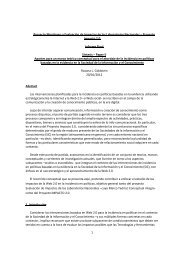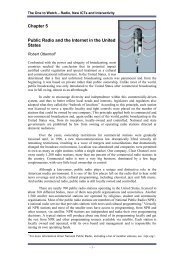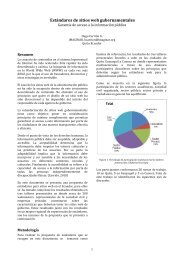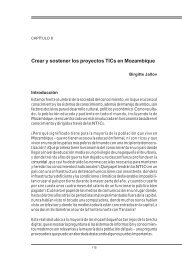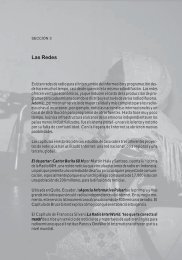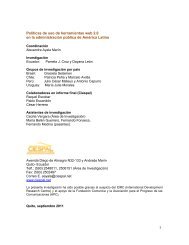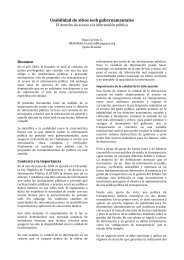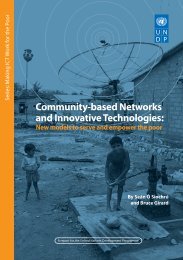Community-based Networks and Innovative Technologies: New ...
Community-based Networks and Innovative Technologies: New ...
Community-based Networks and Innovative Technologies: New ...
You also want an ePaper? Increase the reach of your titles
YUMPU automatically turns print PDFs into web optimized ePapers that Google loves.
<strong>New</strong> models to serve <strong>and</strong> empower the pooraddressing the scale of the challenge in terms of the volume of funds needed but also thebusiness models <strong>and</strong> regulatory approaches available. South Africa’s Underserviced AreaLicenses are also innovative but have not yet delivered on their good intentions. Thesecould constitute a component of a more coherent national policy towards serving thesecommunities, <strong>and</strong> creating an enabling environment.We believe a central feature of such a policy would be support for community owned networks<strong>and</strong> services. In this regard the following could be undertaken:a) Identification of Areas of Need, or ‘ICT Development Zones’: Research could relativelyeasily identify areas that are currently underserved due to market failure orother reasons, <strong>based</strong> on a mixture of qualitative <strong>and</strong> quantitative indicators. Issuesof income <strong>and</strong> need, as well as cost, could be included <strong>and</strong> such areas need not bedelineated solely by geographical boundaries. The goal is not only to ensure thewidespread availability of ICTs, but to use them as a catalyst to stimulate broaderdevelopment actions <strong>and</strong> investment.A proposal has been made to take this further (APC 2005), <strong>and</strong> to designate specific‘ICT Development Zones’ for special assistance, a recognition that current trajectories ofnetwork provision are unlikely to reach them in the foreseeable future. A special regulatory<strong>and</strong> support environment could be created within these to facilitate experimentation,including with community-driven approaches, <strong>and</strong> to enable new lines of financing <strong>and</strong>concessions.An approach that often followed for licensing as well as in the context of universal accessfunds is “strategic zoning’ or packaging of the selected targets, regions <strong>and</strong> territories, toachieve maximum competitive interest as well as regional equity”. 22 In various instances,however companies getting the licenses have preferred to pay the fine rather than investin apparently unprofitable regions. In such instances as well, bidding could be made opento regional networks of community-<strong>based</strong> actors.b) Legal Structure: A suitable legal <strong>and</strong> institutional structure for community ownership,if such does not exist, is important <strong>and</strong> creating it should be an immediatepolicy goal. It should recognise both the limited liability of a conventional company,as well as the ethos <strong>and</strong> requirements of a non-profit development entity.c) Tax Exemptions: Exemption from taxes, such as corporate tax, might be appropriateto enable maximum reinvestment into the community.d) A National Support Unit: The creation of a national support unit of some kind, preferablyalready working with cooperative <strong>and</strong> community development interests, mightbe a useful instrument to explore <strong>and</strong> design a policy <strong>and</strong> its elements, to act as acatalyst for local innovation <strong>and</strong> enterprise <strong>and</strong> an intermediary with state institutions,<strong>and</strong> to deliver support, training, capacity building <strong>and</strong> other needs.The National Telecommunications Cooperative Association in the USA (www.ntca.org)is a good example of a member-driven support organisation, offering an array of services,including a government affairs programme <strong>and</strong> advocacy support; legal representation<strong>and</strong> assistance; educational services; an assortment of publications <strong>and</strong> public relationstools; <strong>and</strong> member meetings <strong>and</strong> events. As seen in the case of the Polish cooperatives (Case48




